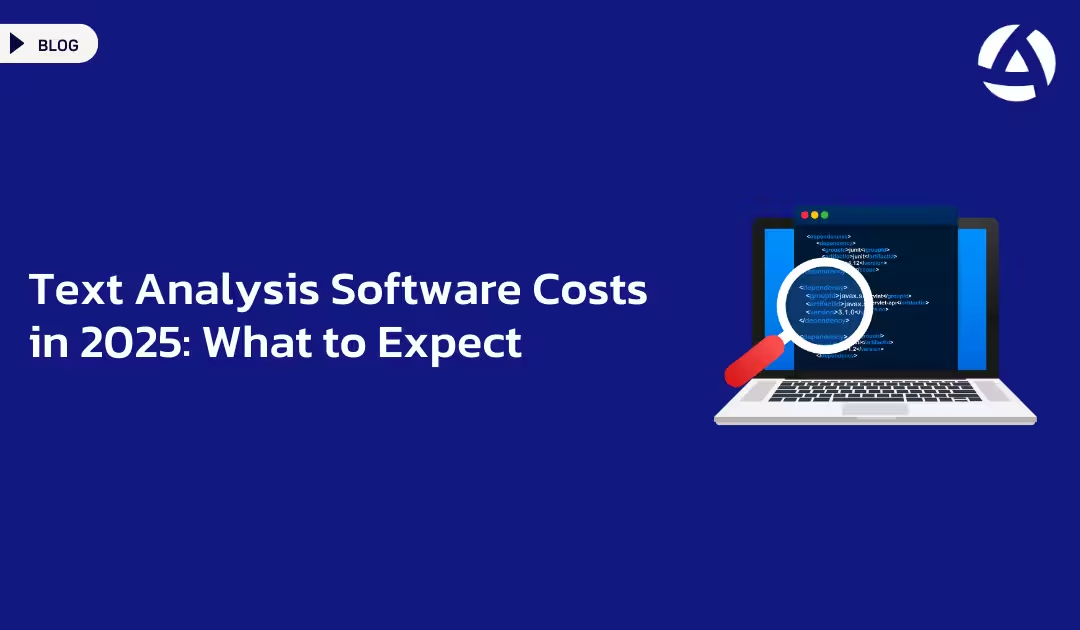As data plays an increasingly central role in decision-making, text analysis software has become essential for businesses looking to extract meaningful insights from unstructured text. This guide breaks down what to consider when budgeting for text analysis software in 2025, helping you align your financial plans with the capabilities that best suit your organization’s needs.
Understanding Key Features in Text Analysis Software
When assessing text analysis software, it’s important to consider the primary features, as they play a significant role in pricing. Knowing what functionalities are necessary for your goals can prevent overpaying for features you may not need.
- Sentiment Analysis: Extracts and analyzes emotions in text, making it useful for customer feedback and brand monitoring.
- Keyword Extraction: Automates the identification of essential words and topics within a dataset.
- Entity Recognition: Identifies key entities, such as names, locations, and brands, which is critical for businesses managing large amounts of text data.
Tiered Pricing Models for Different Business Sizes
The cost of text analysis software varies significantly based on company size and data needs. In 2025, most providers offer tiered pricing models designed to suit diverse needs.
- Small Businesses: Often can start with basic packages, typically costing between $50–$200 per month, depending on functionality.
- Medium Enterprises: Require more robust solutions that can handle higher data volumes, with packages ranging from $200–$700 per month.
- Large Enterprises: Benefit from custom pricing plans that provide extensive scalability, often starting around $1,000 per month.
Cloud vs. On-Premise Software Options
The choice between cloud-based and on-premise text analysis software impacts the budget. Cloud solutions offer greater flexibility and lower upfront costs, but on-premise solutions may be preferred by companies with strict data security needs.
- Cloud Solutions: Typically follow a subscription model, with monthly or annual payments.
- On-Premise Solutions: Generally involve a larger initial investment but may offer lower long-term costs without monthly fees.
Integration Costs for Seamless Operations
Text analysis software often needs to integrate with existing systems, such as CRM or business intelligence tools. Depending on complexity, integration costs may vary, so it’s essential to budget accordingly.
- Standard Integrations: Many solutions come with out-of-the-box integrations for popular platforms.
- Custom Integrations: Businesses with unique needs may require custom integrations, which can add to the implementation cost.
Training and Support Considerations
Effective text analysis requires training for your team to use the software efficiently. Some providers include training, while others charge separately.
- Self-Guided Training: Often included with lower-tier packages, with video guides and online resources.
- Personalized Training: Common in higher-priced packages and may add to initial costs but can reduce operational downtime.
Long-Term Budget Planning
In 2025, budgeting for text analysis software should account not only for upfront and operational costs but also for potential upgrades. As business needs grow, you may find the need to increase data processing power or add new features.
Frequently Asked Questions
How do I choose the right features for my text analysis needs?
Start by identifying the types of text data you handle and the specific insights you want. Look for features like sentiment analysis for feedback, keyword extraction for summarization, and entity recognition for detail-oriented analysis.
Are cloud-based text analysis softwares secure?
Most cloud providers implement strict security protocols, but businesses handling sensitive data should evaluate encryption options and compliance certifications to ensure security aligns with organizational standards.




